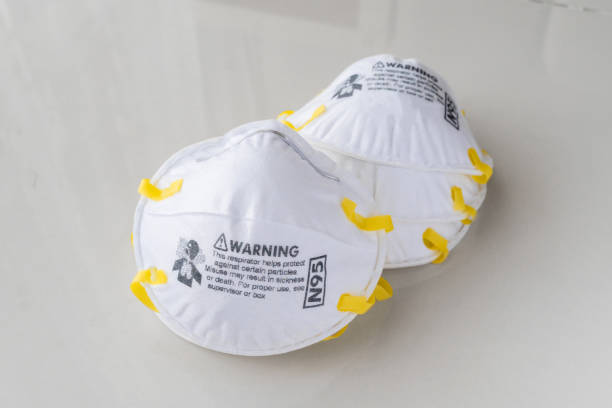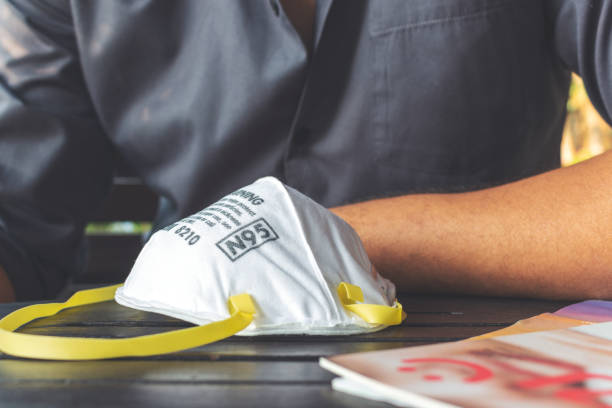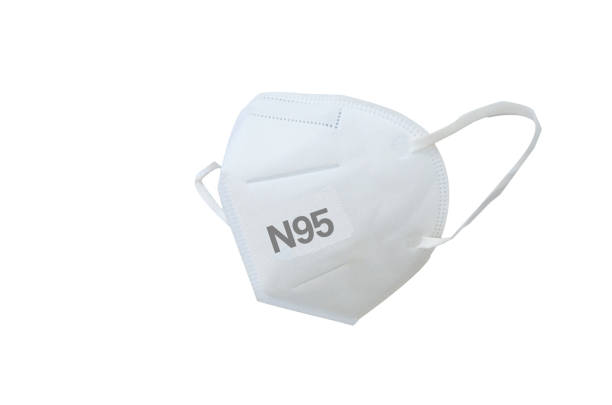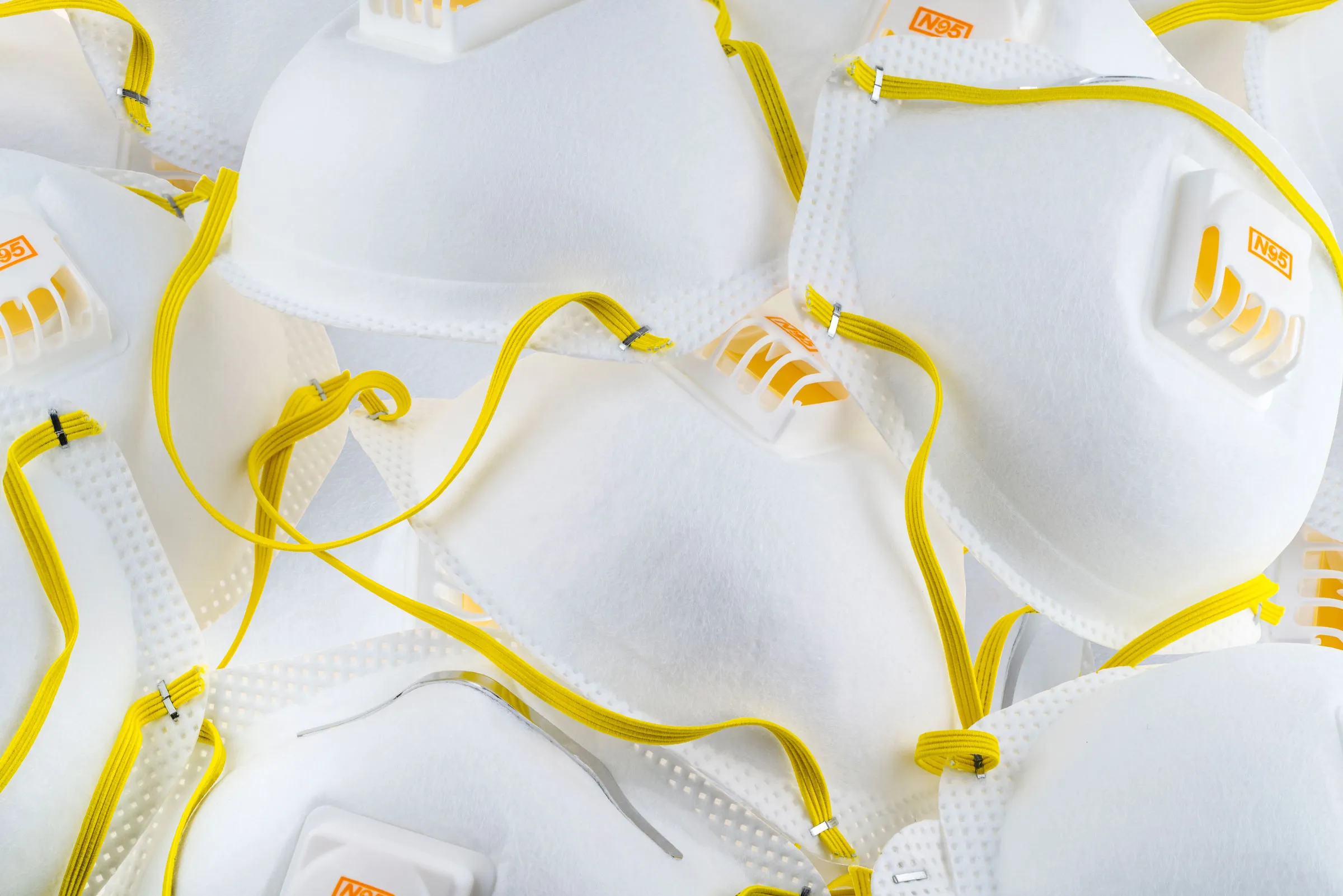According to Gary Warren, CEO of ivWatch, a Virginia-based producer of medical-grade N95 masks, there are two types of N95s: those designed to filter out aerosols and those tested using latex to imitate particle matter.
Both are equally effective in defending you against COVID-19’s causative agent, SARS-CoV-2.
The former may often be found at a hardware shop; although they are effective at keeping paint and sawdust out of your airways, their strong, shell-like design isn’t particularly pleasant for extended periods of time. When the pandemic first started, these were among the masks that garnered attention for inflicting medical staff with face bruises after lengthy hours.
The medical-grade N95 masks, which are designed for aerosols, come in a variety of configurations but are always constructed of three layers of heat-blown polypropylene, a strong metallic noseband that is stiffer than those used in surgical masks, and head straps.

How do N95 masks function?
Medical-grade N95 masks are made of polypropylene, a material that is comparable to certain reusable shopping bags but much denser. As a result, airborne particles have a tougher time entering your airways. Additionally, they work better the better they suit your face; we’ll go through how to get a decent fit later in this narrative.
But there’s more to it, according to Warren, who claims that the center layer of an N95 is electrically charged with up to 30,000 volts. This enables the polypropylene to filter out at least 95% of particles by both attracting them as if the net and tennis ball were magnetic and preventing them the way a net stops a tennis ball.
It’s particularly effective because “this electrostatic charge attracts those particles,” he says. In fact, the melt-blown technique gets more effective with the smaller the particle. The occlusion is often 99.3 to 99.5 percent when you reach 0.1 microns.
According to research, COVID-19-containing respiratory particles may be as tiny as 4.7 microns.
What distinguishes N95 masks from other premium respirators?
Although N95 masks are often cited as the industry standard for particle filtration, masks like the KF94, FPP1, FPP2, and FPP3 perform similarly well. The sole distinction between them is where they were born.
The National Institute of Occupational Safety and Health (NIOSH) regulates and certifies the stringent US process used to produce N95 masks. According to Warren, NIOSH experts often visit manufacturers to ensure the masks produced there are up to par.
While the FPP family is the industry norm in the European Union, the KF94 is the N95’s South Korean counterpart. These varieties perform similarly to N95s and are likewise closely regulated by the government. If you manage to get any of them, you may be sure that they will provide equivalent defense against COVID-19.

The KN95, a Chinese protocol, has been kept distinct for a purpose. Although it is the most extensively used foreign standard in the US, there have been issues with it.
The Emergency Care Research Institute discovered that 70% of KN95 masks did not fulfill the bare minimum of US regulations in September 2020. Similar to this, the website of the Centers for Disease Control and Prevention issues a warning that 60% of KN95s in the US are really fake. Due to the lack of government manufacturing control, it is impossible to tell whether the majority of KN95s you may obtain are genuinely shielding you or anyone in your immediate vicinity against COVID-19. Click here to read more about Having problems with N95 masks? Read this.
What’s even more concerning is how difficult it might be to distinguish between a real KN95 and a fake. The CDC offers tips on how to spot fake masks and also includes a search engine where users can see whether a particular brand and model has been approved by NIOSH. You may also look at this list of more companies and goods that have been given emergency use approval from the Food and Drug Administration (see appendix A).
Unfortunately, these sites are not as user-friendly as they might be, so even if you restrict your search to reputable manufacturers, you can still find up buying a defective mask.
According to Marcus Schabacker, anesthesiologist, and CEO of the ECRI, “our study also discovered that there’s a significant inner product variability, so just though you have one mask which may accomplish what it’s supposed to be doing, the next might not—even from the same manufacturer and same lot.”
A surgical mask is not as effective at protecting you and others as genuine approved KN95s. KN95s, however, don’t fit as snugly, making KF94s, FPPs, and N95 masks even more advantageous.
The characteristics of an N95
N95s must be tight against your face, as we just explained, in order to function at their best. By doing so, you’ll form a seal that prevents any gaps between the mask and your skin from allowing particles to enter your airways.
To guarantee you get that seal, Warren advises wearing masks with a horizontal fold so that they may move with your jaw while you speak and chew. Masks with vertical folds or hinge points, like KN95s, have a tendency to slide up and down, making it difficult to achieve a perfect seal and necessitating frequent readjusting by the user. While fit testing and training may be mandated for healthcare professionals, any N95 masks you purchase should come with instructions on how to test the seal on your own.

Headbands rather than ear loops are another feature to watch out for
According to Warren, the drawback of ear loops is that you can only exert so much pressure until it hurts your ears.
N95 masks against fabric masks versus surgical masks
Before we get into why expensive masks like N95 masks are your greatest defense against airborne COVID-19, it is crucial to stress the adage that any mask is always preferable to none at all.
Therefore, before you spiral into masked nihilism because you can’t acquire an N95, realize that any correctly worn face covering will shield you and your neighborhood from the virus.
Having said that, let’s begin from the bottom. In order to spare the limited personal protective equipment (PPE) for healthcare personnel who were more at risk of getting COVID-19 during the start of the pandemic, officials advised the public to use cloth masks. That made logical at the time, but not now.
The FDA’s decision to rescind its emergency use permission for non-NIOSH-approved masks and advise that healthcare institutions go back to disposable, single-use respirators are in line with Warren and Schabacker’s assertion that there is no longer a scarcity of medical-grade PPE. You can also read about Face masks can prevent COVID-19 transmission by visiting https://www.coronavirus.vic.gov.au/face-masks
